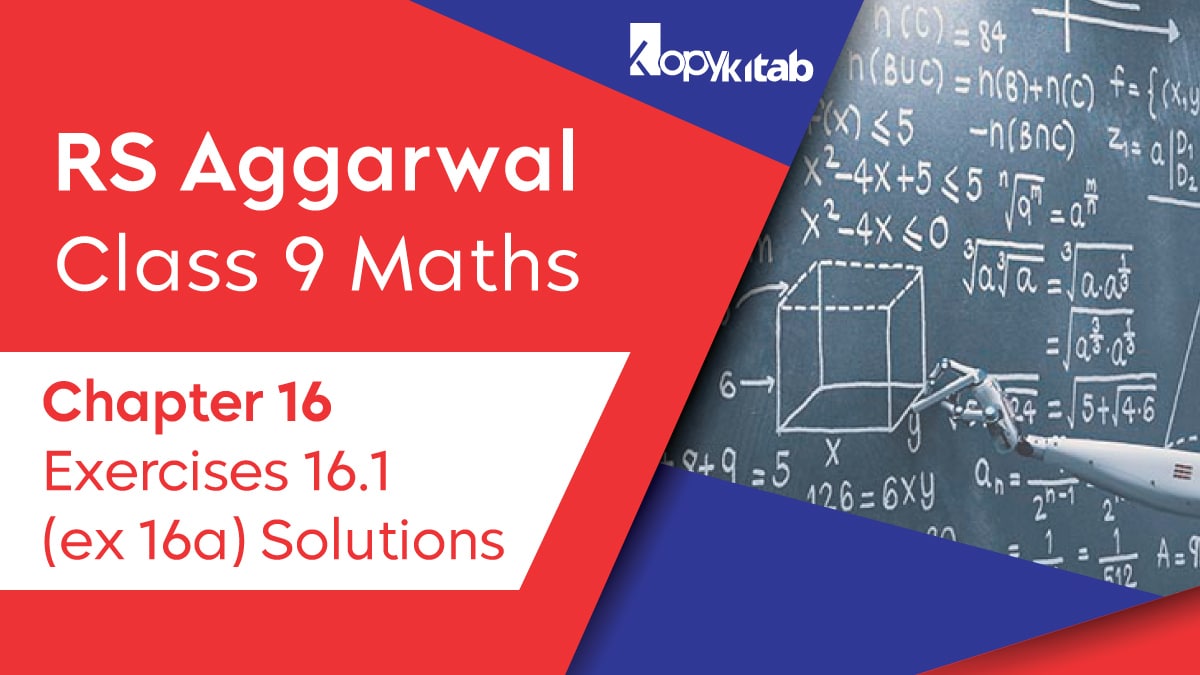RS Aggarwal Chapter 16 Class 9 Maths Exercise 16.1 Solutions: Presenting data in tabular form will help you to get good grades in CBSE exams. In this chapter of RS Aggarwal Class 9 Maths Solutions, there are a total of 20 problems that are divided into one practice. You will learn to solve various problems based on presenting data in tabular form.
There is only 1 exercise in this chapter that focuses on learning the various methods used to prepare a frequency distribution table using the data provided. Chapter 16 contains a basic introduction to the data presentation, followed by the basic features of the data, the limits of statistics and data types, the frequency distribution of ungrouped data, the types of frequency distributions, some definitions, the class boundary or true upper and lower limits. And data class formation method.
Know more here.
Download RS Aggarwal Chapter 16 Class 9 Maths Exercise 16.1 Solutions
Important Definition for RS Aggarwal Chapter 16 Class 9 Maths Exercise 16.1 Solutions
- Statistics is the science that deals with the collection, presentation, analysis, and interpretation of numerical data.
- Numerical records alone represent data.
- Qualitative characteristics like intelligence, poverty, etc., which are unable to be measured numerically, do not form data.
- Data are aggregates of different facts. An observation never forms data.
- Data accrued for an exact purpose may not be acceptable for another purpose.
- Data in specific experiments are comparable.
Highlighting facts and comparison of the primary and secondary data:
- Primary statistics: The data accumulated through the investigator himself with a definite plan in mind are called primary information. These statistics are, therefore, rather dependable and applicable.
- Secondary statistics: The facts amassed using someone, apart from the investigator, are referred to as secondary information. Secondary facts need to be carefully used since they may be collected with a reason specific from that of the investigator and won’t be fully applicable to the investigation.
Some important definitions related to this chapter are as follows:
- Any character when capable of taking several distinct values is known as a variant.
- Each organization into which the raw data is condensed is known as a class interval.
- Class size is defined as the distinction among both the true upper and the lower limit within a category.
- Classmark is defined as the mean of upper limit and lower limit.
- Each class is bounded by two figures that are known as called class limits.
- The upper and lower limits of a class are respectively known as the true upper limit and true lower limit.
- The wide variety of instances an observation occurs in a category is known as the frequency.
- The cumulative frequency similar to a class is the sum of all frequencies along with that class.
Know more here.
FAQs on RS Aggarwal Chapter 16 Class 9 Maths Exercises 16.1 (ex 16a) Solutions
From where can I download the PDF of RS Aggarwal Chapter 16 Class 9 Maths Exercises 16.1 (ex 16a) Solutions?
You can find the download link from the above blog.
How much does it cost to download the PDF of RS Aggarwal Chapter 16 Class 9 Maths Exercises 16.1 (ex 16a) Solutions?
You can download it for free.
Can I access the RS Aggarwal Chapter 16 Class 9 Maths Exercises 16.1 (ex 16a) Solutions PDF offline?
Once you have downloaded the PDF online, you can access it offline as well.
